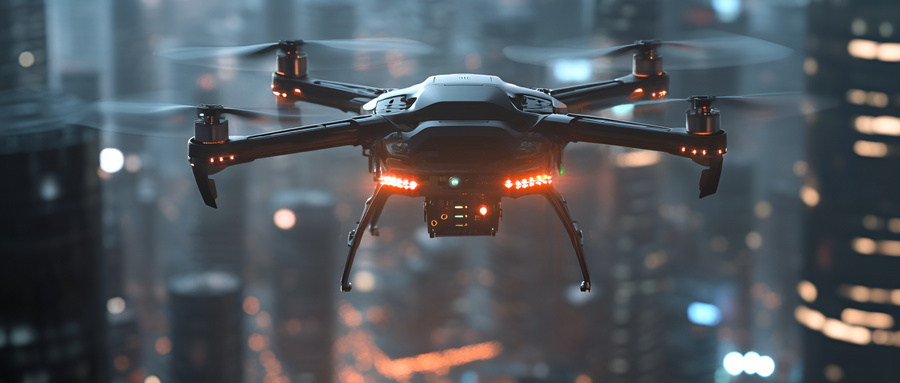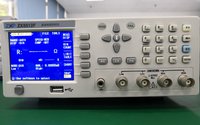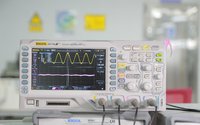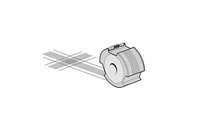Drone Cluster 'Brain' Revealed: How Intelligent Components Reshape Low Altitude Economy
Date:2025-10-15 13:41:00 Views:1301
Recently, a "aerial ballet" consisting of over a hundred drones amazed the audience at the Changchun Air Show. Six high-performance unmanned aerial vehicle formations, including dual wing vertical takeoff and landing fixed wing unmanned aerial vehicles and Wing Qifei Technology, take off and create precise patterns in the night sky. Behind this performance is not only a victory in algorithms and programming, but also an "invisible revolution" in electronic components. From power systems to navigation modules, from communication chips to sensor arrays, intelligent components are becoming the "nerve center" of drone swarms, driving low altitude economy from concept to reality.

In drone swarm performances, the stability of the power system directly determines the formation coordination effect. Traditional silicon-based IGBT power devices are unable to meet the long-term, high load flight requirements due to efficiency bottlenecks, while the rise of third-generation semiconductor material silicon carbide (SiC) has brought disruptive changes to unmanned aerial vehicle power systems. The on resistance of SiC MOSFET is only 1/100 of that of silicon-based devices, reducing energy loss by 70%. After adopting SiC electric drive, the single charge endurance of the dual wing vertical takeoff and landing fixed wing unmanned aerial vehicle has been extended from 45 minutes to 70 minutes, greatly improving the durability of the formation performance. At the same time, the high temperature resistance of silicon carbide devices reduces the complexity of the heat dissipation system, which helps to reduce the weight of the body and improve the load capacity.
Accurate formation flying relies on highly reliable navigation systems. The fusion solution of "Beidou+Inertial Navigation" provides centimeter level positioning and short message communication functions through the Beidou system, combined with the continuous positioning capability of MEMS inertial navigation in the event of signal interruption, and supplemented by AI algorithm to dynamically optimize data fusion, so that the positioning error of the system in complex environments is less than 0.5 meters. Currently, this technology has been successfully validated in logistics delivery demonstrations and can support drones to achieve precise delivery in simulated urban environments.
The remote command and real-time data transmission of drone swarms require a communication network with ultra-low latency and high bandwidth. The combination of 5G and low orbit satellites provides a "space earth integration" solution for this. The 5G slicing network allocates dedicated frequency bands for drones, ensuring that the transmission delay of control commands and image data is less than 20 milliseconds. It supports 100 drones to receive commands simultaneously with almost zero response delay; Low orbit satellites achieve seamless integration in 5G coverage blind spots, ensuring continuous communication. In addition, self-organizing network technology enables the formation of Mesh networks within drone clusters, enhancing overall anti-interference capabilities. Currently, companies such as Huawei and ZTE have launched aviation specific 5G modules, which have been significantly optimized in terms of size and power consumption.
In terms of environmental perception, the autonomous obstacle avoidance and environmental perception capabilities of drone clusters rely on the collaborative work of multiple types of sensors, and intelligent sensor arrays are building the "digital eyes" of drones. Compared to mechanical radar, solid-state LiDAR has a smaller size and lower cost. A certain type of drone is equipped with a 16 line solid-state LiDAR with a detection range of 200 meters and a frame rate of 50Hz, which can recognize obstacles with a diameter of more than 5 centimeters in real time; The combination of millimeter wave radar and convolutional neural network enables unmanned aerial vehicles to accurately perceive dynamic targets within 100 meters ahead in rainy and foggy weather, with an obstacle avoidance success rate increased to 99%; The multispectral camera integrates visible light, infrared, and multispectral sensors, which can identify crop growth, pipeline leaks, and other scenarios. It is applied in agricultural inspection, oil and gas pipeline inspection, and other fields. With domestic manufacturers such as Sagitar Juchuang and Hesai Technology launching more cost-effective products, the application prospects of intelligent sensors will further expand.
Although intelligent components have driven a leap in drone technology, the industry still faces multiple challenges. Aviation grade components require strict environmental testing and design certification, with certification cycles often lasting 2 to 3 years. In terms of supply chain, high-end sensors and core chips still rely mainly on imports, which poses a certain risk of supply interruption. At the same time, the cost of aviation grade components is relatively high, with prices reaching more than 10 times that of consumer grade products, which limits the popularity of drones in the civilian field. However, technological breakthroughs are opening up new paths for the industry: chip level integration technology is expected to integrate multiple functional modules into a single chip, thereby reducing system complexity and costs; The introduction of generative AI greatly improves the efficiency of component layout optimization and parameter tuning, and can shorten the research and development cycle by more than 50%; During the Changchun Aviation Exhibition, several leading domestic enterprises jointly released the "White Paper on Unmanned Intelligent Components Standards", promoting collaborative innovation and resource integration in the upstream and downstream of the industry chain through unified technical specifications and testing standards.
Every flight of the drone cluster is a collective carnival of intelligent components. From the efficiency breakthrough of silicon carbide electric drive to the precise positioning of Beidou navigation, from the real-time response of 5G communication to the environmental perception of sensor arrays, China's electronic components industry is supporting the "soft landing" of low altitude economy with "hard technology". When drones become the main force of urban air traffic, and when agricultural inspections, logistics distribution, and emergency rescue are fully intelligent, this revolution triggered by electronic components has just begun.




 Weixin Service
Weixin Service

 DouYin
DouYin
 KuaiShou
KuaiShou





















